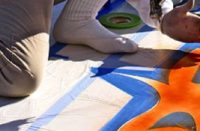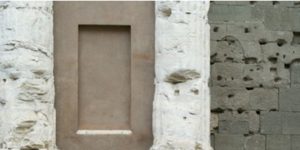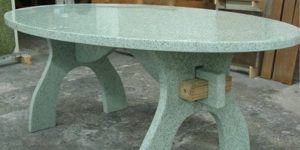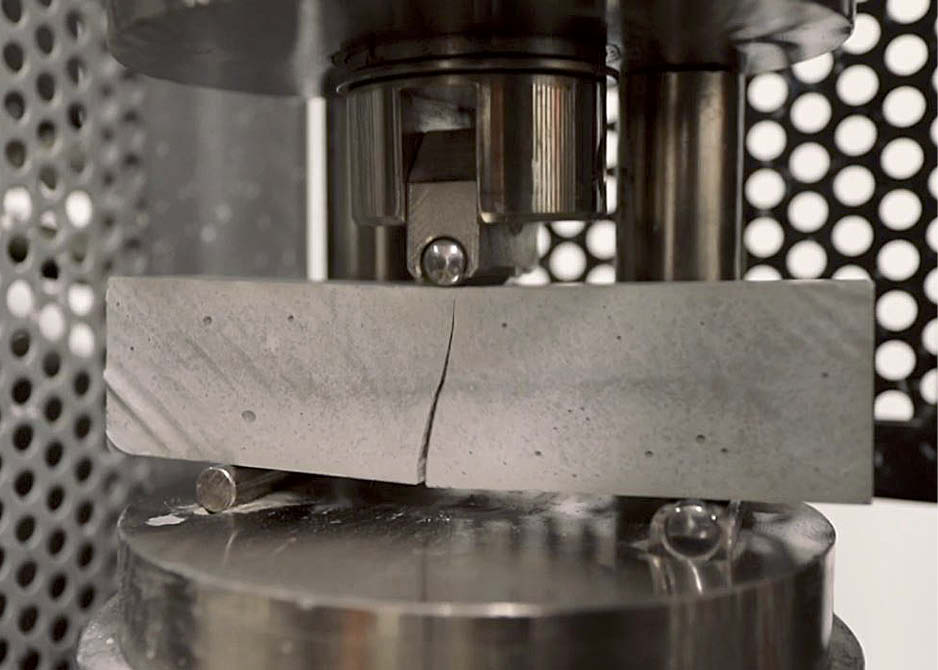
Many often use compressive strength — the ability of a material to withstand compression or pushing it together — to determine mortar and concrete’s quality. This makes sense for floors and overlayments as the primary forces applied to them are downward, compressive loads from traffic, equipment or anything affected by the force of gravity.
However, when it comes to decorative overlayments, you typically install them between 3/8 and 1/2 inch thick. Crack resistance is also critical. When addressing cracking concerns, it’s important to understand how cracks result and how different types of strength can contribute to crack resistance and durability.
In overlay mortars, compressive strength is tested by ASTM C109 – Standard Test Method for Compressive Strength of Hydraulic Cement Mortars (www.astm.org/Standards/C109). The test essentially measures how much force you can apply to a cube with a 4-square-inch surface area before the cube breaks. This allows the user to calculate the pounds per square inch (psi) of the mortar.
Usually, standard concrete is between 3,000 and 5,000 psi. According to the International Polished Concrete Institute (IPCI), the preferred concrete mix design has a minimum compressive strength of 3,500 psi (www.ipcionline.org/index.cfm?fuseaction=polishedConcrete.specifications). A polished overlay should meet or exceed the concrete substrate’s compressive strength. However, you should also consider an overlayment’s tensile and flexural strength as well.
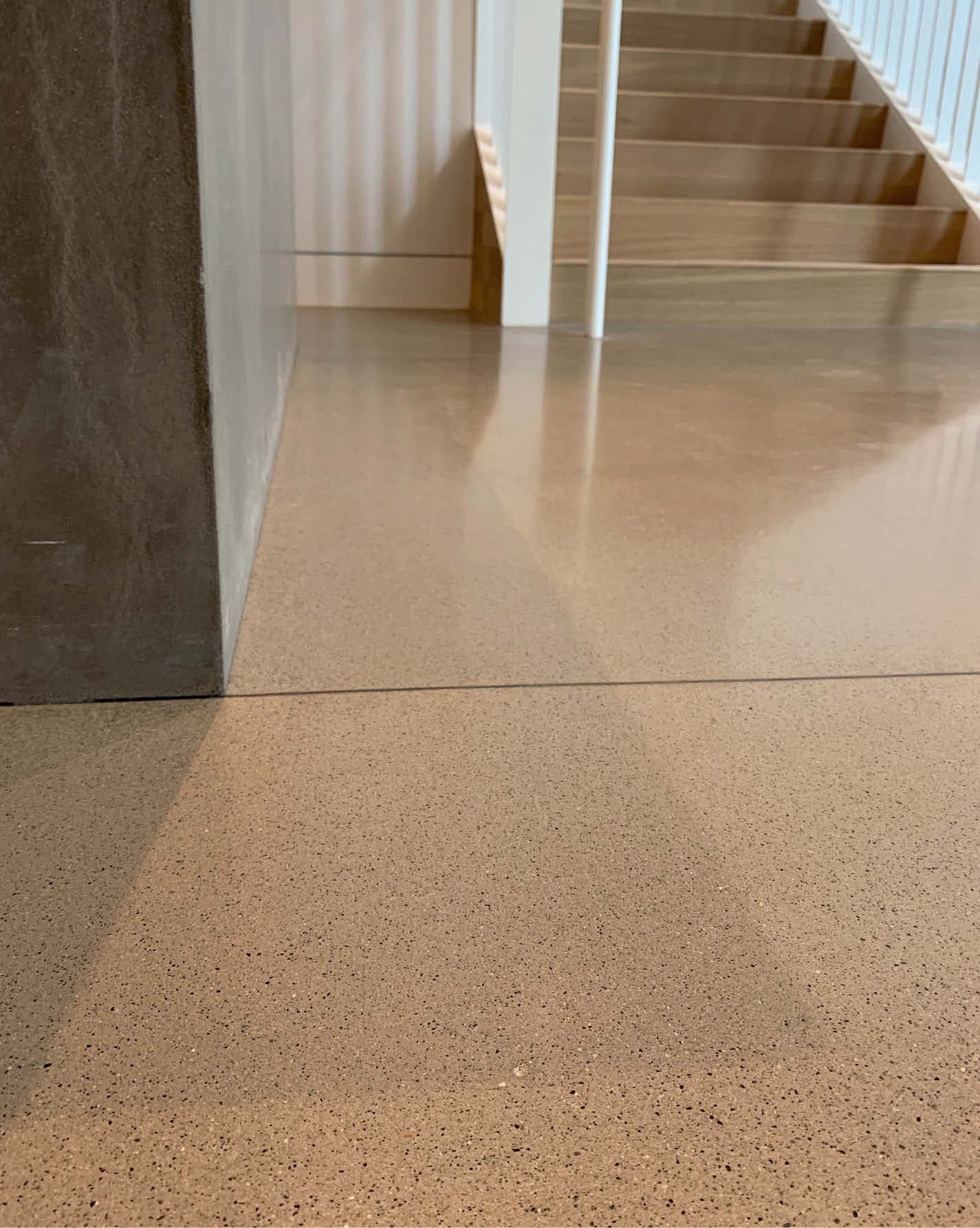
Consider other two strengths
Tensile strength — the ability to resist being pulled apart — is often measured by ASTM C307 – Standard Test Method for Tensile Strength of Chemical-Resistant Mortar, Grouts and Monolithic Surfacings (www.astm.org/Standards/C307).
Flexural strength is the ability to withstand flexing or deflection when you apply a load. The ASTM C348 – Standard Test Method for Flexural Strength of Hydraulic-Cement Mortars measures this. (www.astm.org/Standards/C348).
ASTM C348 is a three-point bending test where the specimen fails on the side opposite to the side where force is being applied. The side that fails is stressed in tension, so flexural strength can really be considered another measurement of tensile strength.
Concrete and other cementitious products traditionally have very high compressive strength and much lower tensile strength. The rule of thumb is that portland cement concrete has a tensile strength that’s about 10% of the compressive strength, but that percentage varies based on the mix design. Producers can adjust the strength by varying the doses of chemical additives in the mix.
There are many reasons cementitious, polishable overlayments may crack — such as drying shrinkage, plastic shrinkage, substrate movement or flexing, and reflective cracking from existing joints or cracks. Ultimately, a surface cracks happen when the forces of tension within the material exceed the material’s ability to resist that force, i.e., tensile strength. A crack relieves the tensile stress in the overlay.

Why care about MOE?
When you apply a force to a material, it will have some amount of nonpermanent deformation. When you remove force, it will rebound to its original shape. The Modulus of Elasticity (MOE) is defined as the ratio of force or stress to that nonpermanent deformation or strain. Rigid or brittle materials have a high MOE, and flexible or ductile materials have a low MOE.
In mortar and concrete, you measure the MOE by ASTM C469 – Standard Test Method for Static Modulus of Elasticity and Poisson’s Ratio of Concrete in Compression (www.astm.org/Standards/C469). In this test, you mount a cage to a cylinder and measure the deformation of the cylinder due to an applied load. You divide the strain is the change in length by the total length of the cylinder.
Figure 1 shows stress versus strain curves for different self-leveling overlayments. Since the MOE is a ratio of stress over strain, the slope of each line is the MOE. The yellow line has a very steep slope, indicating high MOE and a very rigid mortar. The black line represents a mortar that’s more flexible and is more likely to bend slightly before breaking.
This is important when considering tensile stresses that may lead to cracking at the surface. Materials with a very high MOE may have high compressive strengths. However, they are more susceptible to cracking because they’re so rigid. Materials with a lower MOE bend slightly rather than crack when faced with tensile stresses.
In conclusion
To ensure decorative overlayments achieve performance and aesthetic expectations, you must evaluate compressive, tensile and flexural strengths as a whole. Compressive strength measures a material’s ability to resist forces from traffic and equipment. It also measures its ability to resist the impact from dropped items. Tensile and flexural strengths measure the material’s ability to resist forces that can lead to cracking.
You can not predict long-term durability and toughness with compressive strength alone. Evaluating compressive, tensile and flexural strengths together provides a more comprehensive analysis of overall performance. This holistic approach will help architects and specifiers meet and exceed performance and aesthetic expectations in polished overlay designs.


